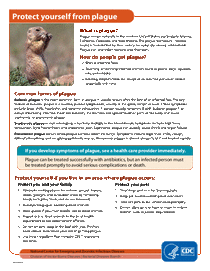Help
 Hantavirus Information for Physicians & Healthcare Workers
Zoonotic Diseases - Help
June 16, 2025
Hantavirus Information for Physicians & Healthcare Workers
Zoonotic Diseases - Help
June 16, 2025
This document provides a wealth of information about Hantavirus for New Mexico physicians and healthcare workers including clinical recognition, presumptive laboratory recognition, presumptive clinical and laboratory recognition, immediate consultation and referral, rapid diagnostic testing, and more.
 West Nile Virus Frequently Asked Questions
Zoonotic Diseases - Help
January 21, 2025
West Nile Virus Frequently Asked Questions
Zoonotic Diseases - Help
January 21, 2025
This list of frequently asked questions explains about the virus, how people get infected, how it is transmitted, symptoms, treatment, and what to do if you get bitten by a mosquito.
 Zika Care Connect Factsheet
Zoonotic Diseases - Help
December 8, 2017
Zika Care Connect Factsheet
Zoonotic Diseases - Help
December 8, 2017
Zika Care Connect aims to improve access to specialty healthcare services for the management of Zika virus infection during pregnancy and outcomes in infants caused by Zika. The program targets the most important and removable barriers to care, as identified by maternal and pediatric care experts. We focus on women infected with Zika during pregnancy, as well as infants born to mothers with laboratory evidence of Zika.
 Hantavirus Frequently Asked Questions
Zoonotic Diseases - Help
April 10, 2017
Hantavirus Frequently Asked Questions
Zoonotic Diseases - Help
April 10, 2017
This fact sheet answers frequently asked questions about Hantavirus including what it is, what the symptoms are, how it spreads, how long people are contagious, what treatments are available, and how to protect yourself from the virus.
 West Nile Virus Fact Sheet
Zoonotic Diseases - Help
January 3, 2014
West Nile Virus Fact Sheet
Zoonotic Diseases - Help
January 3, 2014
This fact sheet explains what West Nile Virus is, what the symptoms are, how the infection is spread, how long people are contagious for, what treatments are available, how you can protect yourself and your family, and more.
 Plague Frequently Asked Questions
Zoonotic Diseases - Help
January 3, 2014
Plague Frequently Asked Questions
Zoonotic Diseases - Help
January 3, 2014
This document answers common questions including what plague is, what symptoms are, how it spreads, how long people are contagious, what treatments are available, and more.
 West Nile Virus Manual for Investigation
Zoonotic Diseases - Help
December 11, 2013
West Nile Virus Manual for Investigation
Zoonotic Diseases - Help
December 11, 2013
The mosquito-borne viral encephalitides (arboviral diseases) are a group of acute central nervous system illnesses. The diseases of this group that occur in New Mexico are western equine encephalitis, St. Louis encephalitis, and West Nile virus.
 Plague Manual for Investigation
Zoonotic Diseases - Help
December 9, 2013
Plague Manual for Investigation
Zoonotic Diseases - Help
December 9, 2013
Provides a wealth of information about plague for New Mexico physicians and healthcare workers including agent, mode of transmission, period of communicability, incubation period, common symptoms, specific forms of plague, laboratory diagnosis, treatment, surveillance, and reporting.
 Rabies Manual for Investigation
Zoonotic Diseases - Help
May 1, 2013
Rabies Manual for Investigation
Zoonotic Diseases - Help
May 1, 2013
Provides all the information required to investigate rabies cases including a summary of the disease, agent details, mode of transmission, period of communicability, incubation period, diagnosis, prophylaxis, surveillance, control measures, and more.
 Plague Fact Sheet
Zoonotic Diseases - Help
February 7, 2013
Plague Fact Sheet
Zoonotic Diseases - Help
February 7, 2013
This fact sheet explains what the plague is, how people get it, common forms of plague, how to protect yourself, and more.
 West Nile Virus Diagnosis and Laboratory Testing Recommendations
Zoonotic Diseases - Help
September 20, 2012
West Nile Virus Diagnosis and Laboratory Testing Recommendations
Zoonotic Diseases - Help
September 20, 2012
Surveillance by the New Mexico Department of Health, physicians, veterinarians and local mosquito control agencies continues to demonstrate yearly West Nile virus activity in many New Mexico counties. Female mosquitoes can over-winter and remain infected with the virus so it is expected that WNV will perpetuate but at varying levels each year depending on environmental conditions.
 Psittacosis Checklist for Pet Stores
Zoonotic Diseases - Help
June 2, 2011
Psittacosis Checklist for Pet Stores
Zoonotic Diseases - Help
June 2, 2011
Psittacosis (parrot fever) is a bacterial infection of humans resulting from exposure to infected birds, usually psittacine birds (e.g., cockatiels, parakeets, parrots, and macaws). The infection in birds is called avian chlamydiosis. Healthy appearing birds can be infected and shed the bacteria when stressed, causing infection of other species of birds (e.g., finches, canaries, and doves) housed in the same environment.
 Psittacosis Checklist for Pet Owners
Zoonotic Diseases - Help
June 2, 2011
Psittacosis Checklist for Pet Owners
Zoonotic Diseases - Help
June 2, 2011
Psittacosis (parrot fever) is a bacterial infection of humans resulting from exposure to infected birds, usually psittacine birds (e.g., cockatiels, parakeets, parrots, and macaws). The infection in birds is called avian chlamydiosis. Healthy appearing birds can be infected and shed the bacteria when stressed, causing infection of other species of birds (e.g., finches, canaries, and doves) housed in the same environment.
 Plague Information for Physicians & Healthcare Workers
Zoonotic Diseases - Help
September 1, 2009
Plague Information for Physicians & Healthcare Workers
Zoonotic Diseases - Help
September 1, 2009
This document provides a wealth of information about plague for New Mexico physicians and healthcare workers including modes of transmission, clinical recognition, treatment, clinical consultation and referral, public aspects of plague, and more.


